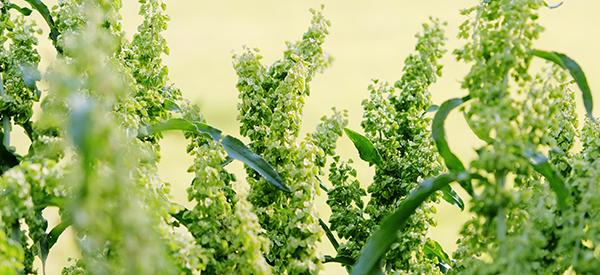
Curly Dock
Curly dock (Rumex crispus), sometimes called yellow dock, is mostly known as a nuisance agricultural weed. And with good reason! Curly dock is not only a long-living perennial with abundant seed production, but its seeds also survive in the soil for 50 to 80 years. Sure, curly dock is an invasive, sometimes noxious species of plant, but it is also entirely edible from the seeds to the roots, and the stems and leaves as well.
A member of the buckwheat family of plants, Polygonaceae, curly dock is a species from the genus Rumex. This makes curly dock ‘cousins’ to nearly 200 Rumex species including other wild or cultivated edibles like sorrel and broadleaf dock.
Curly dock grew in popularity during the Great Depression as an easy to identify, widespread wild edible. One of the first greens to sprout up in spring, young greens are highly nutritious. Like sorrel, the leaves have a lemon-like sour taste. Curly dock has better flavor when grown in moist rich soils. Once the plant starts to bolt or shoot up a flower stalk, the young stock can be eaten as well. Curly dock has both internal and external medicinal uses.
Where the Plant is Found
A common sight in fallow fields and roadsides, curly docks are widespread but less prolific than similar tap-rooted naturalized invasive plants like dandelions. With their perennial sturdy tap root, curly docks are drought tolerant but are found in moist areas also. If harvesting curly dock, choose moister sites for improved flavor. As with many wild and cultivated greens, drought leads to bitterness.
A non-native plant, curly dock arrived from Eurasia during the 18th century. Common in waste areas and disturbed sites, curly dock grows in all US states and most Canadian provinces.
Related: The Complete Map of Edible Plants: Find Out What You Have in Your Area! (Video)
How to Identify Curly Dock

Shape: Perennial, 1 to 3 feet tall, forming a basal rosette of leaves with bolting flower stalk that persists through summer, fall, and winter.
- Leaves: Dull green, alternate leaves are 6 inches long and 1 inch wide with ruffled margins.
- Flower: Flowers are scentless, born in whorls on stalks, and tiny at 1/8 of an inch in size.
- Stem: Stalks are round, hairless, and ribbed.
- Fruit & Seeds: Abundant seeds are encased in a papery capsule that is beige, maturing to a reddish maroon color.
- Root: Stout taproot that is pale yellow on the inside.
Related: Plant Identification Guide – 400 Wild Plants That You Can Forage For (Video)
How to Grow Curly Dock
Potentially, the question might be how not to grow curly dock. This plant boasts seeds that survive in the soil for 50 to 80 years, and tolerates full sun, shade, gravel, clay, loam, as well as flooding, drought, and even mowing.
If you have a spot where curly dock is welcome, try employing measures to improve its flavor by improving the soil and moisture levels. Curly dock is not harmful to humans but is not favorable forage for livestock or poultry. It is best to keep curly dock in check-in areas frequented by farm animals. In addition, it also can host some unwanted agricultural diseases. That being said, curly dock does provide a host wildlife habitat for some butterflies, and the seeds are eaten by a variety of birds.
Related: 10 Plants That You Should Never Plant Together (Video)
How to Harvest Curly Dock
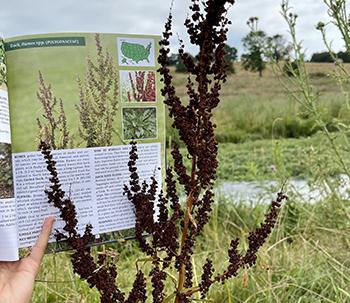 Leaves: It is best to harvest leaves in early spring while the leaves are young and supple. Mature leaves are leathery, easily bruised, and often bitter.
Leaves: It is best to harvest leaves in early spring while the leaves are young and supple. Mature leaves are leathery, easily bruised, and often bitter.
Stems: The stems or flower stalk is edible. Stems can be harvested in late spring or early summer before the flowers begin to emerge. Young stalks can be harvested and eaten raw or cooked as a vegetable.
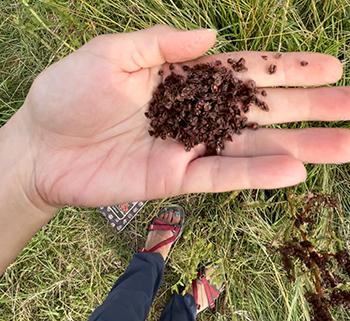 Roots: In early spring or late fall to winter, when the plants store their energy in their roots, is the best time to harvest curly dock roots. It is said that the roots are too bitter to be palatable which may vary depending on climate and growing condition. Curly dock roots have medicinal uses.
Roots: In early spring or late fall to winter, when the plants store their energy in their roots, is the best time to harvest curly dock roots. It is said that the roots are too bitter to be palatable which may vary depending on climate and growing condition. Curly dock roots have medicinal uses.
Seeds: Curly dock produces plentiful seeds that are easy to harvest. They persist on plants through winter and are quite attractive in shades of rich browns and reds. The flower stalk is covered in papery encapsulated seeds. They winnow easily from the stems.
I collect the seed in late summer while the seed is still beige. Then I dry it for later use in paper or cloth bags in a dark, dry area with good air circulation. This is mainly to attempt to avoid any little creatures that might nestle into the seed clusters as summer, fall, and winter progress.
It is challenging to remove the paper capsule and separate the chaff from the seed. You can choose to forgo this process, depending on how you want to use the seed. This paper capsule is edible. The seed can be ground into flour with or without the chaff. You might use curly dock seed in place of flax or chia seeds. Below, I attempt to grow microgreens from curly dock seeds in winter.
Related: I Stopped Spending Money At The Pharmacy By Growing These 10 Plants (Video)
What Plant Is Good For & The Natural Remedies Made From It
Curly dock root has a yellow root which has a gentle laxative effect and is a useful remedy for constipation. It is soothing for irritable bowels and aids digestion. Well cleaned roots can be dried or used fresh to make a tea or decoction. This treatment may also help stimulate urination, liver function aid urinary tract infections, and help internal inflammation. A tea or decoction of the root may also be used topically to aid skin conditions such as eczema.
What Parts of Curly Dock Are Used In Remedies?
All parts of the curly dock can be used in remedies, but for constipation and digestion, the root is the most medicinally active. The root contains anthraquinones which have gentle laxative activity. As a functional food, curly dock is an herbal food with anti-inflammatory effects. As long-term inflammation can cause a variety of chronic diseases, adding curly dock to the diet may help to suppress the occurrence of body inflammation over time.
A DIY Recipe for Curly Dock Microgreens
I am currently investigating which wild edibles grow delicious microgreens. Since curly dock has a unique lemon-like sour flavor, I thought I would see if the seed collected last summer would germinate at a high enough rate to grow a reasonable crop of microgreens.
Method
Step 1: Identify a curly dock plant. After the plant has flowered and seeds emerge collect seeds for future uses.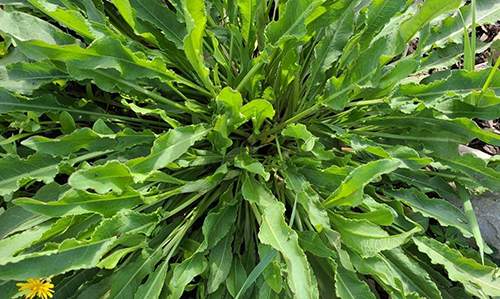
Step 2: Use your favorite method for growing microgreens. I use a few different ones. I really like repurposing take-out sushi containers. Yes, I have a weakness for take-out sushi. Anyway, the containers with the snap-close see-through top make perfect mini-greenhouses that fit right on my windowsill. I place a thin, ½ inch layer of organic potting soil in the bottom and moisten well. Then simply smother the top layer with seeds, close the lid, and wait.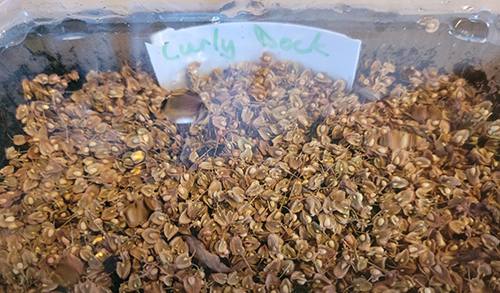
Step 3: Germination was visible on day 10. The rate of germination is sparse. I think I could try pressing the seed into the soil a bit more. As a contrast, mustard microgreens are harvested on day 7 and add a nice spicy heat to salads at that stage.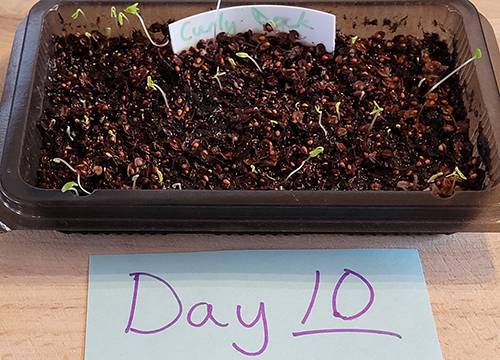
Step 4: And here we are on day 30. Not too big of a meal. Lettuce seeds, started at the same time, are about 30 times this size. I am still going to call it a win though. This is because, if vibrant green things were really hard to come by, you could find seeds in the winter and sprout them for winter greens to aid nutrition.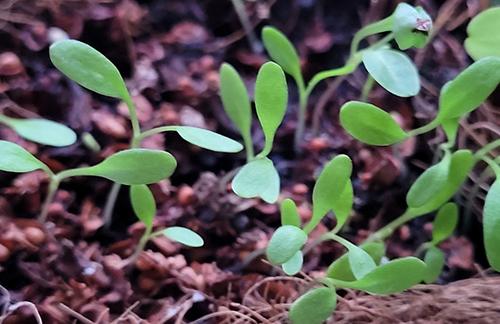
Potential Uses
In winter it is sometimes hard to get enough fresh green vegetables into the diet. Being able to grow even a small quantity of fresh foods at home on windowsills, in sprouting jars, or in dedicated growing areas helps to meet this need. Microgreens are said to have 40 times the nutrient value of full-sized plants. Small in volume, but large in nutrition. Curly dock microgreens are a great addition to sprinkle on salads, soups, sandwiches, or anywhere a little bit of valuable green nutrition is welcome.
Related: Add This “Unusual Nutrient” to Coffee or Tea, to Effortlessly and Fully Empty Your Bowels Every Single Morning (Learn More)
Dosage
According to WebMD, the dose of curly dock depends on a person’s age, health, and other conditions. Currently, there is not enough scientific information to determine the appropriate range of doses for curly dock. They also state to be sure to follow directions on product labels and talk to your pharmacist.
How To Preserve Curly Dock
Curly dock seeds can be kept in a dark dry place almost indefinitely. The root can be preserved by drying. Clean and chop roots into small pieces and place them in a single layer on a cookie sheet. Put the sheet in a dry dark place for 7 to 10 days. Once the root is fully dried, place pieces in an airtight container or glass jar. Use in tea or in a decoction to aid digestive and constipation issues.
What Plants Resemble Curly Dock?
| Feature | Curly dock (Rumex crispus) | Burdock (Arctium minus) | Sorrel (Rumex acetosa) |
|---|---|---|---|
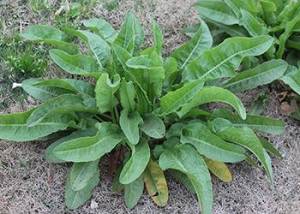 | 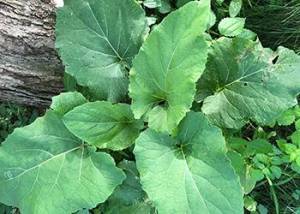 | 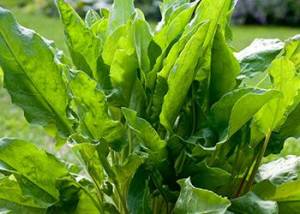 | |
| Size | Perennial, basal rosette, with flower stalk 1 to 3 feet tall. | Biennial, basal rosette in the first year, 2 to 6 feet tall in the second year. | Perennial, basal rosette, up to 2 feet tall with flower stalks. |
| Leaves | Wavy margins, pale green, alternate, 6 inches long and 1 inch wide. | Alternate, large, heart-shaped, dark green, with woolly undersides. | Arrow-shaped leaves are 3 to 6 inches long. |
| Flowers | Tiny, 1/8 of an inch born in whorls on tall stalks in early summer. | Prickly bur encasing pink to purple bloom in spring. | Whorled spikes of reddish-green flowers in early summer. |
Warnings And Cautions
According to PFAF, curly dock may contain quite high levels of oxalic acid. This is what gives curly dock its lemon-like sour flavor. In small quantities, oxalic acid isn’t harmful. In excess, oxalic acid may lock up important nutrients and minerals and in extreme cases, may cause mineral deficiencies. Cooking curly dock helps to lessen the amount of oxalic acid. Eating lots of oxalic acid-containing foods may potentially aggravate certain health conditions such as rheumatism, arthritis, gout, kidney stones, or hyperacidity. PFAF also recommends avoiding curly dock during pregnancy and breastfeeding.
Always check with your healthcare provider before starting new herbal remedies.
References:
https://www.illinoiswildflowers.info/weeds/plants/curly_dock.htm
https://www.fourseasonforaging.com/blog/2020/1/25/curly-dock
https://pubmed.ncbi.nlm.nih.gov/32458452/
https://www.webmd.com/vitamins/ai/ingredientmono-651/yellow-dock
You may also like:
 I Used To Cut This Plant: Until I Saw This!
I Used To Cut This Plant: Until I Saw This!
The US Army’s Forgotten Food Miracle (Video)
Herbs to Boost Oxytocin, the Happiness Hormone

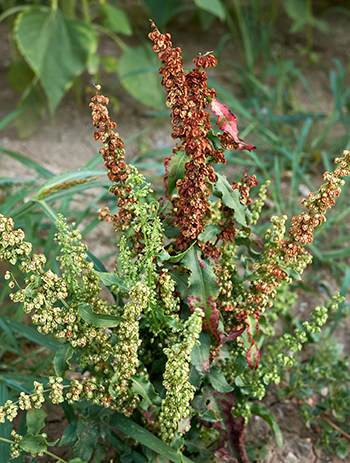
I think this is what we as kids knew as “Indian Tobacco”. We enjoyed stripping the dried pods off of the stalks.
Different plant. That is a Lobelia in the family Campanulaceae
I knew i did not destroy this clump of green leaves in my veggie box for some reason! it is curly dock! now that i know i will harvest some roots and dry them for a “digestive concoction or tea ! thank you!
“Hey Moe! Hey Larry! Get your bags and gloves; we’re going to foraging, for supper!”
I am interested in this curly doc,I have heard of it but never saw it. I need some seed
WHAT IS GOOD FOR DIABETES IN EARLY STAGES
Fasting will cure your diabetes.
Ronnie, I don’t know much about type 1, but for type 2 diabetes, the simplest way forward is to cut out as much processed food as possible from the diet and replace with real food like vegetables and some meat. Also make sure to give the body at least 12 hours a day with no food intake. For example from 8pm to 8am. The digestive system needs to rest too. If the person is in the habit of drinking soda regularly, that must end as soda is a big contributor to diabetes.
Prayer and fasting.
try keto intermittent fasting. look up Dr Berry and Dr Berg
Fig leaves mimic insulin and MAY prevent diabetes from developing in people who are genetically predisposed for the disease. Mulberry leaves are also effective, PLUS will help prevent —and treat—atherosclerosis, dissolving arterial plaques. Gather the leaves in the Fall and dry them for tea. Fig leaves can be gathered in Summer til Fall
The Mulberry leaves contain a compound called 1-Deoxynojirimycin. It stops/reverses atherosclerosis and other cardiovascular conditions. As a special bonus, it will inhibit HCV and HIV infection.
Ronnie, My hubby (diabetes 2), was on 2 meds-Metforin & Jardiance, (which made him dizzy). His sugar never dropped below 280, at times was over 360 !! A Naturalpath (ND) doctor prescribed an herb blend. He quit taking the Metforin & Jardiance, (look up the side effects of those 2 !!) Sugar now averages 120. 😊
I was addicted to sugar, so that, even though I spent 2 years at a homeless shelter, I would treat myself to a pint of Ben @ Jerry’s, to celebrate my reloaded Food Stamp. This, along with eating poorly, being medicated, inert, and having a zero spiritual life, led in hindsight, to me believing that, its now a miracle, that I’m still alive. Even though I’m 5’8, I weighed 325 pounds. I took 1 Metformin, twice a day, along with 35 units of 70/30 inoculations, twice a day. I had cancer, 2 heart attacks, 2 strokes, a pacemaker, and a blood clot. I turned to Jesus. Despite all my problems, the real miracle, is that He loves me. I’ve cleaned my house, and have eliminated all sugar, gluten, and manufactured foods, that aren’t USDA Organic. In making a new lifestyle, I now seek the produce section, but, even better, is sojourning to the Farmers Market. The best option, since being introduced to “The Lost Herbs”, is to add foraging to my walks. I’ve lost 140 pounds, cancer, Diabetes 2, and have a new wardrobe. Now, I’m looking for fellow soldiers, in the Lord’s Marine Corps. Do you want to join me?
Would it be possible to get the names of the herbs in the blend prescribed for your husband? or the name of the doctor? I am Type 2 also and having problems getting my numbers down. Thank you!
What of in the herbal blend please?
Outstanding information. My granddaughter and I are experimenting on all fronts! If it’s not growing wild, we’ll grow it ourselves.
I tried what I think was called Lambs Ear yesterday and a couple of minutes had to go back and get some more…..it was that good. Watched it grow wild for three years. Picked up the wild foraging book from Nicole A…..somethiing….. In color and I know what I can eat when the shelves are bare….. My real name is Kevin ; but, you can call me Larry or Moe….. The others may well find themselves depending on cockroach milk as planned.
Is there any plant to help eye disease
Eyebright is a good herb for the eyes, whether using as an eyewash or talen internally in tea form. I’ll have to see some other herbs for the eyes as well.